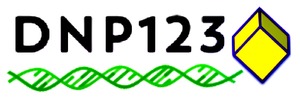|
DNP123 just completed its first Nanotech Design Competition. Teams were asked to design on paper a tool that can determine whether a given sample contains monomeric or oligomeric proteins, i.e. do the proteins show up one at a time or are they clumped together in a bunch. Differentiating between different protein forms is important, as certain forms can act as early warning signs for diseases.[1]
We had many good entries. The majority of participants came up with a design solution that could at least feasibly be used to distinguish different types of proteins. This demonstrates a fact we hold dear at DNP123: Anyone, even high school students who don’t yet have a ton of experience, can make meaningful contributions to state of the art nanotechnology, if they are given affordable, easy-to-use tools. I’m happy to say that we had not one, but two winning teams. In no particular order, they are… Winner 1: “Monomer/Oligomer Distinction Using Antibodies and Light Wavelength Measurement” Team: Caleb Belden, Jonathan Percy, Evan Voogd from Norwalk High School. This team designed a systems of nanocubes coated with antibodies that would bind to the proteins. The number of proteins bound would effectively change the radius of the particle, which they predicted could be detected using
Winner 2: “Separation of Monomer and Oligomers Through Magnetic Nanoparticles” Team 2: Casey Spiess, Jose Cordova, Ryan Rafferty, and Mitchell Wood from Waukee Aspiring Professional Experience (APEX) This team designed a nanoparticle crystal structure that contained gaps of a certain size. The gap size was just large enough to fit the monomeric form of the protein, but was too small to fit the oligomeric form. After trapping monomeric proteins in the crystal, they could extract them from solution by pulling the magnetic nanoparticle crystal out with a magnet. They could then detect any remaining oligomeric proteins using a variety of suitable techniques. Congratulations to our winners! You’ll be receiving Amazon gift cards for your efforts. -Santos [1] For example, check out this video to see how different forms of the protein amyloid beta are associated with Alzheimer’s disease. |

 RSS Feed
RSS Feed